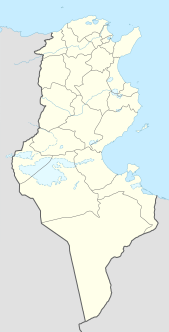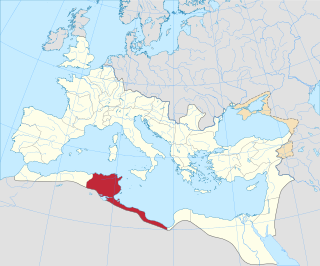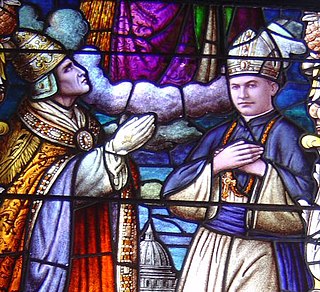
Kelibia (Kélibia), often referred to as Calibia by European writers, is a coastal town on the Cap Bon peninsula, Nabeul Governorate in the far north-eastern part of Tunisia. Its sand beaches are considered some of the finest in the Mediterranean.

Thelepte was a city in the Roman province of Byzacena, now in western Tunisia. It is located 5 km from the modern town of Fériana, near the border with Algeria, at around 34°58′33″N8°35′38″E.

Assuras, sometimes given as Assura or Assur, was a town in the Roman province of Proconsular Africa.
Casae Calanae was a town in the Roman province of Numidia.

Collo was an ancient Roman–Berber city in the northern Skikda Province, Algeria. It was the capital and one of three municipalities of Collo District, and a Catholic titular episcopal see under its Roman name Chullu. In 1998, it had a population of 27,800.

Téboursouk is a town and commune in the Béja Governorate, Tunisia. It is located at 36° 27′ 26″N, 009° 14′ 54″E.

Bonusta was a town, not far from Carthage, in the Roman province of Africa Proconsularis. No trace of it has been identified.
Musti in Numidia], also called Musti Numidiae, was an ancient city and bishopric, and is presently a Catholic titular see, in modern Algeria.

Aquae Sirenses, also known as Aquaesirensis, is an ancient Roman colonia and a modern titular see of the Roman Catholic Church in Algeria.

Volitanus also known as Voli and Bolitana was a Roman era civitas (town) of Africa Proconsularis, a suffragan metropolis of Carthage in Roman North Africa.

Aeliae or Æliæ was a Roman-era city in the province of Byzacena.

Henchir-Mencoub was an ancient Roman–Berber civitas in Tunisia. It has been tentatively identified with Medeli, a Roman era town in the province of Africa Proconsularis.
Henchir-El-Meden is a locality and archaeological site in Tunisia.

Melzi was a civitas (town) of the Roman Empire during late antiquity. It was also known as Meditanus.

Migirpa was an ancient Roman-Berber civitas in the province of Africa Proconsularis. It flourished from 30 BC to AD640. The town is identified as stone ruins near Carthage, Tunisia.

The Diocese of Aquensis in Byzacena is a home suppressed and titular see of the Roman Catholic Church.
Cediae (Cediæ) was an ancient city and former bishopric in Roman North Africa. It is now a Latin Catholic titular see.

Rusubbicari was a Phoenician and Carthaginian colony and Roman town. It has been tentatively identified with ruins at Zemmouri El Bahri, Algeria. The Roman town was in the province of Mauretania Caesariensis.
The Dioces of Thysdrus is a suppressed and titular See of the Roman Catholic Church.
The Diocese of Vittoriana is a suppressed and titular see of the Roman Catholic Church.














